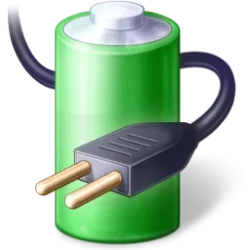This tutorial will show you how to delete a power plan in Windows 10 and Windows 11.
A power plan is a collection of hardware and system settings that manages how your computer uses power. Power plans can help you save energy, maximize system performance, or achieve a balance between the two. A power plan is also known as a power scheme.
Changes made to a power plan settings will affect all users that use the same power plan as their default active power plan.
Windows 10/11 includes the following power plans by default:
- Balanced = Offers full performance when you need it and saves power when you don't. This is the best power plan for most people. Allows you to change your Power Mode.
- Power saver = Saves power by reducing PC performance and screen brightness. If you're using a laptop, this plan can help you get the most from a single battery charge.
- High performance = Maximizes screen brightness and might increase PC performance. This plan uses a lot more energy, so your laptop battery won't last as long between charges.
- Ultimate Performance = Only available in the Windows 10/11 Pro for Workstations edition by default, but can be added to any edition. Provides ultimate performance on higher end PCs. It builds on the current High-Performance policy, and goes a step further to eliminate micro-latencies associated with fine grained power management techniques. As the power scheme is geared towards reducing micro-latencies it may directly impact hardware; and consume more power than the default balanced plan. The Ultimate Performance power policy is currently not available on battery powered systems by default.
- Custom = These are custom power plans created by a user on the PC and/or included by your PC manufacturer (OEM).
You can only delete custom power plans using this option.
You will not be able to delete the Balanced, Power saver, High performance, and Ultimate Performance default power plans using this option. You will need to use Option Two to delete a default power plan instead.
1 Open the Control Panel (icons view), and click/tap on the Power Options icon.
2 Click/tap on the Change plan settings link for the power plan (ex: "My Custom Plan 1") you want to delete. (see screenshot below)
If the power plan you want to delete is currently your default active power plan, then you will need to change your default active power plan first.
3 Click/tap on Delete this plan. (see screenshot below)
4 Click/tap on OK to confirm. (see screenshot below)
5 You can now close the Control Panel if you like.
1 Open Windows Terminal, and select either Windows PowerShell or Command Prompt.
2 Copy and paste
powercfg /list into the terminal, and press Enter. This will give you a list of all existing power plans on the PC along with the GUID for each plan. (see screenshot below step 3)3 Make note of the GUID (ex:"6f31bda9-450b-4c16-9905-e8b993fdfc69") for the power plan (ex: "My Custom Plan 1") you want to delete. (see screenshot below)
The power plan scheme that has an asterisk (*) to the right of it is your current default active power plan.
If the power plan you want to delete is currently your default active power plan, then you will need to change your default active power plan before continuing the steps below.
4 Type the command below into Windows Terminal, and press Enter.
powercfg -delete GUIDSubstitute GUID in the command above with the actual GUID (ex:"6f31bda9-450b-4c16-9905-e8b993fdfc69") from step 3 for the power plan you want to delete.
For example: powercfg -delete 6f31bda9-450b-4c16-9905-e8b993fdfc69
5 You can now close Windows Terminal if you like.
That's it,
Shawn Brink













